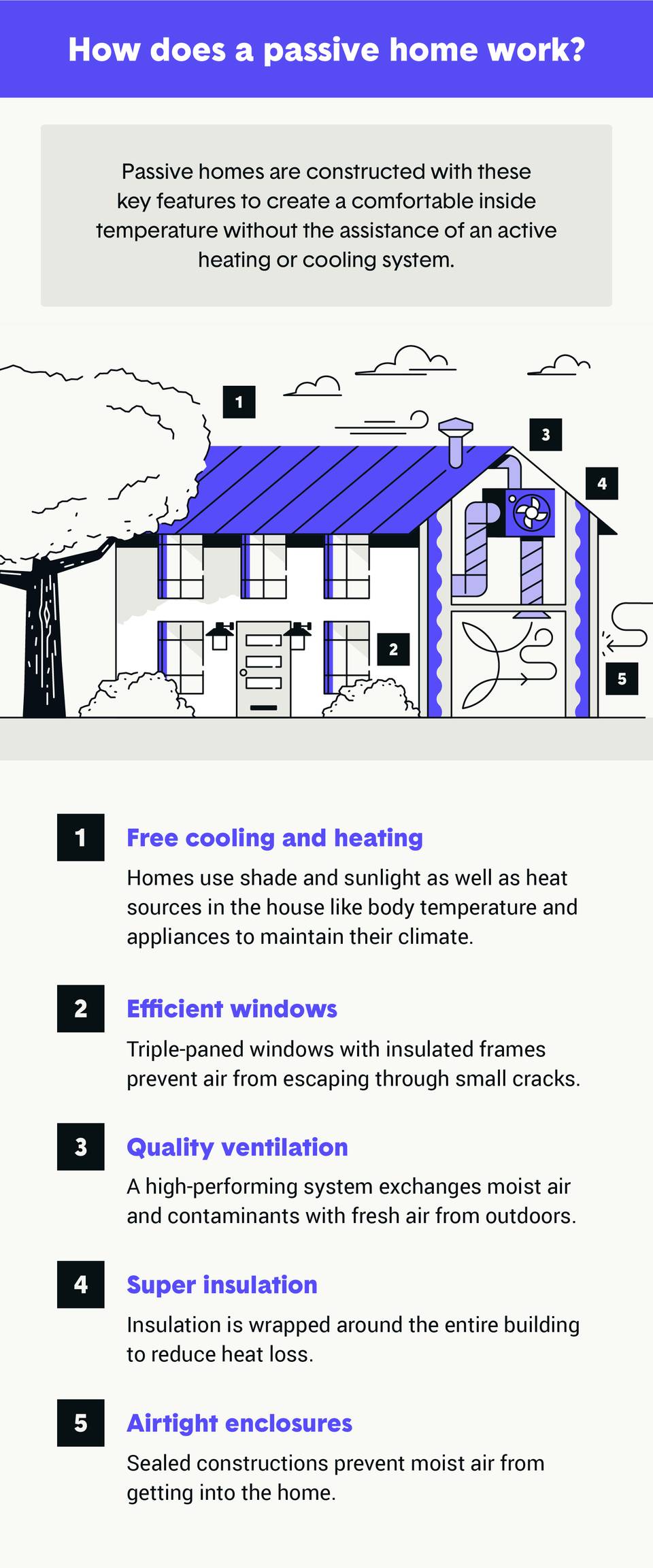A passive house is one in which interior climate and temperature can be maintained without an active heating or cooling system. The certified standard, created by the Passivhaus Institut in Germany, goes beyond solar panels or alternate energy sources. To be certified as passive, buildings must meet certain criteria.
Passive houses are among the most energy-efficient and eco-friendly options for homes. With energy savings as high as 90% compared to typical structures and 75% compared to new construction, passive structures reduce the energy needed to both cool and heat your home. Passive structures make use of shade, sunlight, and other internal and external temperature sources to eliminate the need for an active heating or cooling system.
While there’s no one-size-fits-all approach to building a passive house, our infographic shares how these structures work, so you can better plan the design of your next home.




